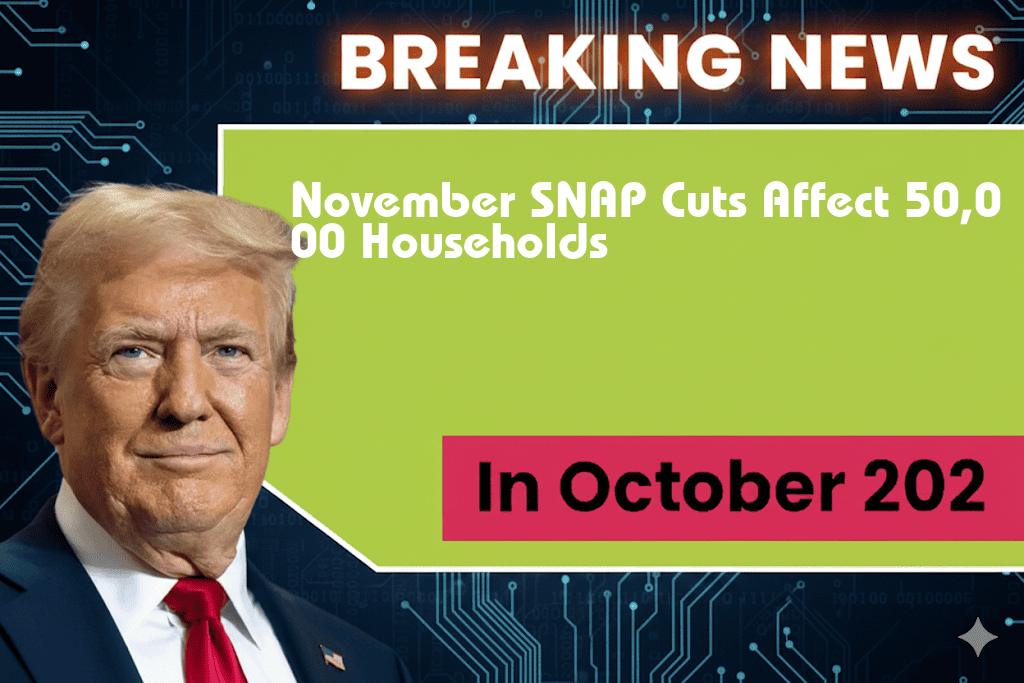November Sees $58 SNAP Reduction Impacting 50,000 Households
In November, the Supplemental Nutrition Assistance Program (SNAP) will see a reduction of $58 per month for approximately 50,000 households across the United States. This cut comes as part of a broader adjustment to benefits that has raised concerns among advocates for low-income families. The reduction, which will take effect at the beginning of the month, is attributed to the expiration of emergency allotments that were temporarily implemented during the COVID-19 pandemic. As the country moves further away from pandemic-related measures, many families will face increased food insecurity as they adapt to the new benefit levels.
Background on SNAP Benefits
SNAP, formerly known as food stamps, provides essential nutritional assistance to millions of Americans. The program aims to alleviate hunger and improve nutrition among low-income households. Benefits are determined based on household size, income, and expenses, with the aim of ensuring that families can afford adequate food.
Emergency Allotments and Their Impact
During the COVID-19 pandemic, many states implemented emergency allotments, which allowed households to receive the maximum benefits allowed based on their size. This temporary measure was crucial for families struggling with job losses and economic instability. However, as these emergency measures conclude, many families now face a dramatic decrease in their monthly assistance.
Details of the November Reduction
- Reduction Amount: $58 per month
- Number of Affected Households: 50,000
- Effective Date: November 1, 2023
The reduction is expected to significantly impact those already struggling to make ends meet. For many families, every dollar counts, and losing nearly $60 per month could mean the difference between a balanced meal and food insecurity.
Reactions from Advocacy Groups
Advocates for low-income families have expressed deep concern regarding the upcoming changes. Organizations such as the Feeding America network have highlighted the potential for increased hunger and hardship among vulnerable populations. They argue that the timing of these cuts is particularly troubling as inflation continues to rise, driving up costs for basic necessities.
Statements from Experts
Experts suggest that the SNAP cuts could exacerbate existing food insecurity issues. According to a report from the U.S. Department of Agriculture, food insecurity affects millions of households, and reductions in SNAP benefits can lead to an increase in hunger-related health issues.
State-Level Responses
Some states are exploring ways to mitigate the effects of the impending cuts. Various local governments have launched initiatives aimed at providing additional support to families facing food insecurity. These efforts include food drives, partnerships with local food banks, and outreach programs to help families navigate available resources.
Local Initiatives
| State | Initiative | Description |
|---|---|---|
| California | Food Bank Partnerships | Collaboration with local food banks to distribute additional food resources. |
| New York | Emergency Food Programs | Increased funding for emergency food programs to support high-demand areas. |
| Texas | Community Education | Programs to educate families on nutrition and available food assistance. |
The Future of SNAP Benefits
As the country adapts to post-pandemic realities, the future of SNAP benefits remains uncertain. Policymakers are tasked with addressing the growing concerns around food insecurity while balancing budget constraints. Advocates continue to push for more permanent solutions to ensure that low-income families have access to sufficient nutrition.
With the November reductions looming, the focus now shifts to how communities and governments will respond to the immediate needs of those affected. The situation highlights the critical importance of food assistance programs in maintaining public health and well-being.
Frequently Asked Questions
What is the reason for the $58 SNAP reduction in November?
The $58 SNAP reduction in November is part of ongoing adjustments made by the government to the Supplemental Nutrition Assistance Program (SNAP) benefits, which aim to reflect changes in the cost of living and economic conditions.
How many households are affected by this reduction?
This reduction impacts approximately 50,000 households, creating challenges for families that rely on these benefits for their monthly food expenses.
When will the SNAP reduction take effect?
The SNAP reduction will take effect in November, affecting the benefits distributed to eligible households during that month.
What should affected households do in response to the reduction?
Affected households may need to reassess their budgets and explore local food assistance programs or resources to help mitigate the impact of the reduced SNAP benefits.
Are there any resources available for families facing food insecurity due to the SNAP cut?
Yes, there are various local food banks and community organizations that offer assistance. Families can also contact their local SNAP office for information on additional resources and support.

Leave a Reply